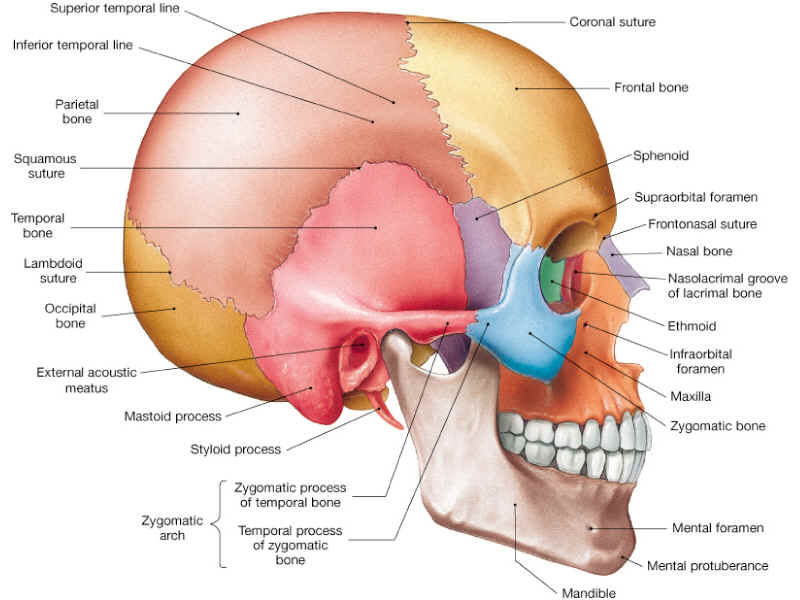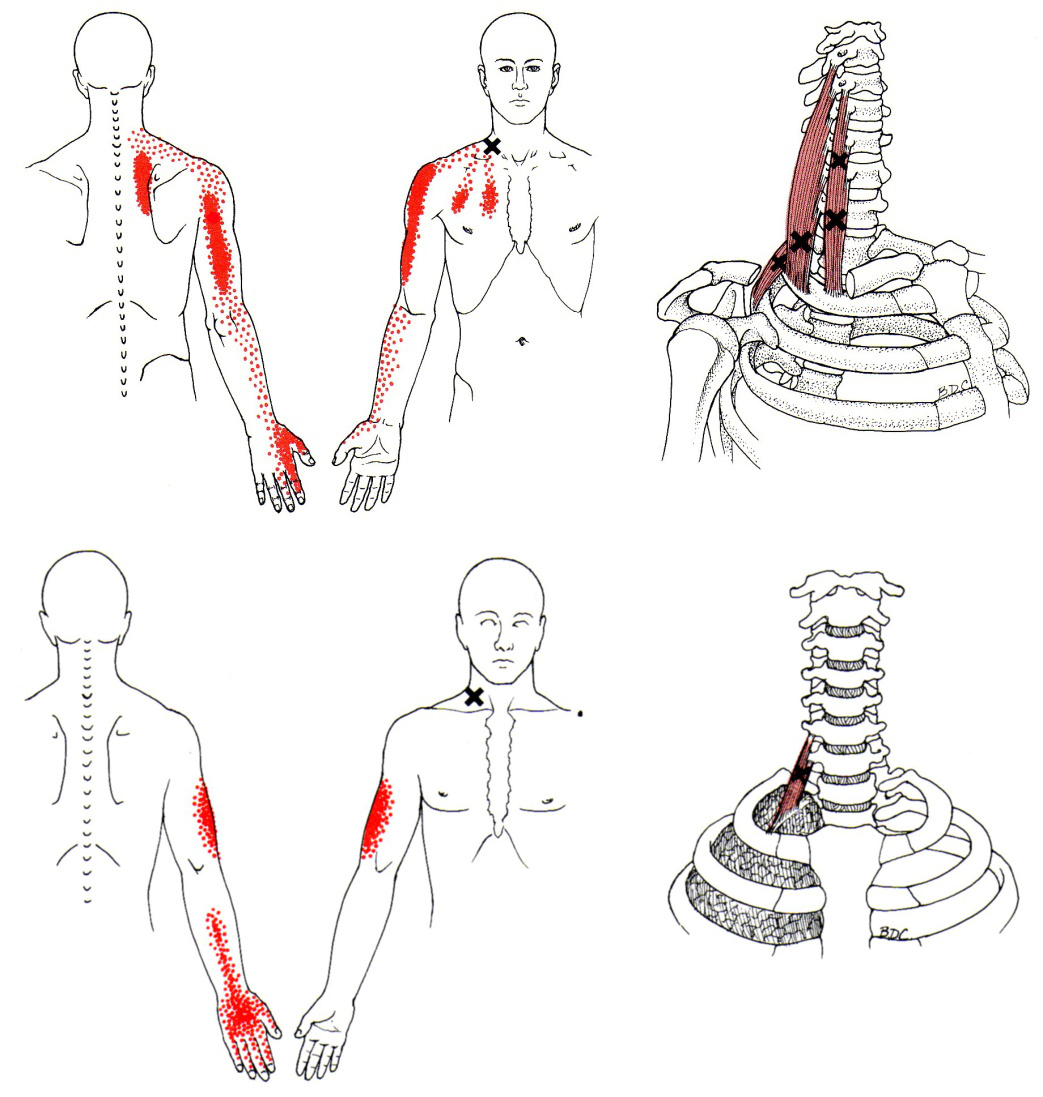Nagging. What do you think of? Something that does not go away and annoys your personal space of serenity. You tell that person or remove that nagging thing but it comes back. One may think of a nagging spouse. One may think of a nagging boss. In this case, I am talking about the nagging neck pain. If you have been working at a desk job, the chances that you have neck tension is high. In “Our Mighty Duck! Quack! Quack! Quack! (How to Manage Neck Pain)” I discuss the role of the neck and two BIG reasons that contributes to neck tension that not many practitioners discuss. The follow up article “Hidden Causes for Nagging Neck Pain (Part 1)” I discuss direct self care treatments and exercises to the head and neck that may help dampen down the frequency and intensity of your neck pain. Part one elaborates on specific exercises to help one address where the tension is located. Part 2 will provide insights and self care exercises to our head and neck region that is usually not thought as important to our neck and head pain. Addressing these hidden pain drivers can have a profound effect to reducing the nagging frequency and intensity of your neck pain.
This article will address tension and dysfunctions that are from the skull, jaw and front neck region. To understand the complexities of our body but still simple for everyone to understand the vital components of the three listed regions, I will say that there are four regions that is in a constant state of movement: cranium sutures, tongue/hyoid region, diaphragm and pelvic floor region. The diaphragm is becoming more mainstream in performance and rehab setting in regards to our core and stability. You have to breath and the diaphragm makes sense that it can never stop moving. I will provide an exercise for the diaphragm in part 3 where I will address a comprehensive treatment plan for chronic head and neck pain.
 The cranial sutures moves every second and is important in maintaining brain fluid homeostasis. We have a fluid called the cerebral spinal fluid (CSF) that cushions our brain from the skull. Our body reabsorb and produces 500 mL of fluid daily. It connects with our inner ear and plays a role with clearing metabolic waste, buoyancy, protection, chemical stability and prevention of brain ischemia. Addressing this structure can result in profound changes in pain and other health related issues since the brain controls everything! This fluid is impacted by our lymphatic (fluid waste) and cardiac (heart) system. To test if you have dysfunctions within your cranium, run your finger along these lines. There should be no tender spots and tensed regions. The sphenoid bone is one that is commonly dysfunctional.
The cranial sutures moves every second and is important in maintaining brain fluid homeostasis. We have a fluid called the cerebral spinal fluid (CSF) that cushions our brain from the skull. Our body reabsorb and produces 500 mL of fluid daily. It connects with our inner ear and plays a role with clearing metabolic waste, buoyancy, protection, chemical stability and prevention of brain ischemia. Addressing this structure can result in profound changes in pain and other health related issues since the brain controls everything! This fluid is impacted by our lymphatic (fluid waste) and cardiac (heart) system. To test if you have dysfunctions within your cranium, run your finger along these lines. There should be no tender spots and tensed regions. The sphenoid bone is one that is commonly dysfunctional.
 Our jaw is obviously a structure that is connected to our head and neck but rarely is it addressed in chronic neck pain. There are muscles that attach to the jaw that can mimic neck and head pain. A few examples are the masseter, temporalis, pterygoids, and hyoid muscles. In addition to having “knots” to our upper shoulder/neck region (depending on how you define your anatomy), people of high stress tend to clench and grind their jaw. It is common to have dental work and have issues to our head and neck shortly weeks or years after due to maladaption and difficulty for our body to make sense of this new jaw alignment. The hyoid bone is a important to tongue and upper respiratory function. Addressing this bone that is in a constant state of movement can make important relaxing changes to our neck and head muscles.
Our jaw is obviously a structure that is connected to our head and neck but rarely is it addressed in chronic neck pain. There are muscles that attach to the jaw that can mimic neck and head pain. A few examples are the masseter, temporalis, pterygoids, and hyoid muscles. In addition to having “knots” to our upper shoulder/neck region (depending on how you define your anatomy), people of high stress tend to clench and grind their jaw. It is common to have dental work and have issues to our head and neck shortly weeks or years after due to maladaption and difficulty for our body to make sense of this new jaw alignment. The hyoid bone is a important to tongue and upper respiratory function. Addressing this bone that is in a constant state of movement can make important relaxing changes to our neck and head muscles.
 Other important muscles that are important to test if they play a role in your neck pain are the sternocleidomastoid and scalenes. Trigger points is a great way of assessing hidden source of dysfunction that can mimic pain somewhere else. Most people focus on stretching out our traps and levator scapulae, for good reasons, but forget these two problem child of the neck too. The “x” is where your press and the shaded area is where you might feel dull and achy pain. Notice how the scalenes muscles can mimic arm pain that surgeons might think is coming from a nerve from your neck.
Other important muscles that are important to test if they play a role in your neck pain are the sternocleidomastoid and scalenes. Trigger points is a great way of assessing hidden source of dysfunction that can mimic pain somewhere else. Most people focus on stretching out our traps and levator scapulae, for good reasons, but forget these two problem child of the neck too. The “x” is where your press and the shaded area is where you might feel dull and achy pain. Notice how the scalenes muscles can mimic arm pain that surgeons might think is coming from a nerve from your neck.
Self Treatments Ideas
- Cranium region mobilizations: scan your sutures with your fingers. At the location of tenderness, move your finger up, down, side to side and diagonally. In the direction the is the most tender, keep your finger gently pressed while you move your head in the opposite directions. You can add a deep inhalation and exhalation at the end of the head/neck motion. Example. If the upper part of your sphenoid bone is tender, press it as you look and tuck your chin down. Hold for 8-10 seconds as you breath. Repeat for 5 times. Perform on both sides.
- Temporal fascial decompression: take your fingers and pinch the temples (region to the side of your eyes and slightly move upwards). Pinch and pull as you squint your eyes. Repeat. This is not pleasant but powerful in relaxing your temporalis and cranial facia.
- Hyoid and front neck release: make a letter “c” with your right hand. GENTLY grab the sides of the region below you jaw line. Shift it side to side and notice any tension or difficulties in performing this. Shift it to the right as you bend your head backwards. You should not feel any tension pushing your fingers away. If you do, keep this pressure and repeat the head movements up and down 10 times. SLOWLY enough to time it with your breathing. The release technique can be done with arm movements. A shift of this region should not be felt when you raise your arm up, sideways or behind the back.
- Scalenes and Sternocleidomastoid stretch. Perform a yoga cobra stretch and while keeping a good neck alignment with you chin retracted (double chin posture), tilt your head to the side. Deep breathing and repeat. I love using this yoga pose because it addresses the entire spine that is tends to be rounded from all the forward bending tasks we do like sitting.
Our next article to this series in to address indirect care to regions that may impact our head and neck. Indirect care is working on the rest of your body: torso, low back, pelvis, diaphragm, pelvic floor, glutes, and even the big toe. As you can see, there are too much information for this one article. The next article will delve more into how to assess and self manage these areas so compensations does not compound into a “pain in the neck”.
The last part of this series will address balance and our inner ear system that contributes to balance. When I get a client referred to me that has tried every medical treatment under the sun, this is my first go-to assessment. Most of the time, I am able to unmask a balance system issue.
If you are interested in a direct 1-on-1 consultation for a nagging neck pain or pain elsewhere, contact us at revitalizerehab@gmail.com. We would love to hear your story and plan a program for a better future where you can drive or enjoy an evening with you love ones at dinner without turning your whole trunk.